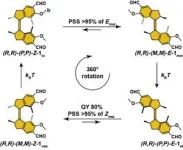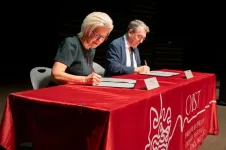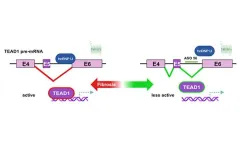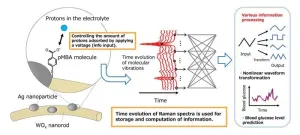Singapore, 26 April 2024 – A team of clinician-scientists and scientists from the University of Nottingham (Malaysia campus), National Cancer Centre Singapore (NCCS), Cancer Research Malaysia, Nanyang Technological University, Singapore (NTU Singapore), University of Malaya, University of Cambridge, A*STAR’s Genome Institute of Singapore (GIS) and other institutions, have conducted the largest study done to date of BRCA1 and BRCA2 (BReast CAncer Gene 1 and 2) carriers in an Asian population and refined breast and ovarian cancer risk estimates for this population. The findings, published in The Lancet Regional Health - Western Pacific, will better guide the clinical management of Asian patients with BRCA1 and BRCA2 mutations.
Breast cancer is the most common and top cause of cancer mortality for females in Singapore, while ovarian cancer ranks 6th in incidence and mortality for the same group.[1] A 2022 study, conducted as part of Singapore’s National Precision Medicine Programme, showed that almost 1 in 150 individuals in Singapore are affected by genetic mutations associated with hereditary breast and ovarian cancers.[2] Global estimates indicate that 3-5% of breast cancers and 10-15% of ovarian cancers are caused by mutations in these genes. BRCA1 and BRCA2 genes are the most commonly affected genes in hereditary breast and ovarian cancers, and carriers have an elevated risk of developing these cancers.
However, large-scale studies on BRCA1 and BRCA2 carriers have only been done in populations of primarily European ancestry. Given that other genes and lifestyle factors also influence the risk of cancers in BRCA carriers and these are different in Asians compared to Europeans, there was significant uncertainty around cancer risks in Asian BRCA carriers. Clinical management of BRCA1 and BRCA2 carriers in Asia can be improved, as only 4 small scale studies have been done on this cohort to date. More information is needed to guide the proactive care and surveillance for BRCA1 and BRCA2 carriers of Asian descent.
To address this pressing clinical need, a multidisciplinary team of clinician-scientists, scientists and genetic counsellors, studied the clinical data of 572 families in Singapore and Malaysia with BRCA1 and BRCA2 mutations. The family members were 20 to 79 years old and of Chinese, Indian and Malay ethnicity. Of the 1,121 BRCA1 carriers, 144 and 65 were diagnosed with breast and ovarian cancer, respectively. Of the 1,275 BRCA2 carriers, 152 were diagnosed with breast cancer and 19 with ovarian cancer. Statistical analysis was used to estimate the risk that carriers had of developing breast and ovarian cancers. They were also compared based on ethnicity, location, and birth cohort.
Key findings
Findings showed that penetrance, or the likelihood of these carriers developing breast cancer has increased over time, with the biggest increase in people born after 1960. This increase is likely caused by urbanisation, and changes in reproductive patterns. Estimated breast cancer incidence for all ethnicities in the study was highest at age 55 and decrease after.
The study also highlighted, as shown in Figure 1,[3] the incidence of cancer for BRCA1 and BRCA2 carriers in Singapore is similar to those in Western populations. The blue line, blue circle and blue square represent the cumulative risk of Asians in the United States, Malaysian Chinese and Singaporean Chinese, respectively while the orange line, orange circle and orange square represent Asians in the United Kingdom, Malaysian Indians and Singaporean Indians, respectively.
The cumulative risks of Chinese BRCA1 and BRCA2 carriers in Singapore developing breast and ovarian cancers were similar to Asians in the United States (approximately 37% East Asians in the United States) but higher compared to Chinese in Malaysia. The cumulative risks of Indian BRCA1 and BRCA2 carriers in Singapore were similar to Asians in UK (with approximately 47% South Asians in the United Kingdom) but higher compared to Indians from Malaysia.
Implications for clinical management
The findings of this study provide an important new framework for estimating cancer risks in Asian carriers, allowing a more tailored approach to clinical management of this population. This is supported by an editorial in the February 2024 issue of JAMA Oncology, that opined advances in technology allowed for easier and lower cost identification of BRCA1 and BRCA2 carriers, allowing for implementation of cancer risk management strategies outlined by the National Comprehensive Cancer Network (An alliance of 33 cancer centres in the United States). This includes clinical breast examination and breast MRI at 25 years of age, mammography at 30 years of age, risk reducing surgeries and therapeutic interventions.[4] In the same issue, a study of 2488 women in North America and Europe suggested that MRI surveillance for female BRCA1 carriers was associated with a significant reduction in breast cancer mortality compared with no MRI surveillance[5]. A second study of 4,332 women who were BRCA1 or BRCA2 carriers indicated that oophorectomy is associated with a significant reduction in all-cause mortality.[6]
Early intervention for BRCA1 and BRCA2 carriers include screening options based on an individual’s risk to detect cancer at its earliest, most treatable stage, and risk-reducing measures such as therapeutic interventions (antioestrogen therapy, tamoxifen etc,) and prophylactic surgeries (mastectomy, salpingectomy, and oophorectomy).
“Recent studies have shown that BRCA1 and BRCA2 gene carriers are more common than previously thought, while this study highlights that the risk of the carriers developing breast and ovarian cancers in Singapore is as high as in Western countries. Genetic testing should be considered to identify carriers early, so that care planning can be personalised and early interventions, such as regular surveillance and risk reducing measures can be implemented,” said co-senior author Associate Professor Joanne Ngeow, Associate Professor of genomic medicine at NTU Singapore’s Lee Kong Chian School of Medicine and Head of the Cancer Genetics Service at NCCS.
This research is supported by Singapore Ministry of Health’s National Medical Research Council (NMRC) under the Clinician Scientist Award - Investigator (MOH-000654).
--
For media enquiries, please contact:
Dharshini Subbiah
National Cancer Centre Singapore
Corporate Communications
Email : dharshini.subbiah@nccs.com.sg
Mobile : 9616 7532
--
About the National Cancer Centre Singapore
The National Cancer Centre Singapore (NCCS) is a leading national and regional tertiary cancer centre with specialists who are experts in treating cancer. In addition to offering holistic and multidisciplinary oncology care, our clinicians and scientists collaborate with local and international partners to conduct robust, cutting-edge clinical and translational research. To achieve its vision of being a global leading cancer centre, NCCS offers world-class care and shares its depth of experience and expertise by training local and overseas medical professionals.
To meet growing healthcare needs, the new NCCS building opened in 2023 with increased capacity and expanded facilities dedicated to cancer care, rehabilitation, research and education. To give patients the best treatment outcomes, advanced and innovative treatment such as proton therapy is offered at the new Goh Cheng Liang Proton Therapy Centre at NCCS.
In 2024, NCCS celebrates its silver anniversary, celebrating 25 years of advancing cancer care from breakthroughs to healing.
[1] National Registry of Diseases Office. (2023). Singapore Cancer Registry Annual Report 2021. Retrieved from: https://www.nrdo.gov.sg/docs/librariesprovider3/default-document-library/scr-ar-2021-web-report.pdf?sfvrsn=591fc02c_0
[2] Incidence of hereditary breast and ovarian cancer mutations in the Malay population was 0.25% compared to 0.02% in the Chinese population and 0% in the Indian population. Chan, S.H., Bylstra, Y., Teo, J.X. et al. Analysis of clinically relevant variants from ancestrally diverse Asian genomes. Nat Commun 13, 6694 (2022). https://doi.org/10.1038/s41467-022-34116-9
[3] Ho, W.-K., Hassan, N. T., Yoon, S.-Y., Yang, X., Lim, J. M. C., Binte Ishak, N. D., Ho, P. J., Wijaya, E. A., Ng, P. P.-S., Luccarini, C., Allen, J., Tai, M.-C., Chiang, J., Zhang, Z., See, M.-H., Thong, M.-K., Woo, Y.-L., Dunning, A. M., Hartman, M., … Teo, S.-H. (2024). Age-specific breast and ovarian cancer risks associated with germline BRCA1 or BRCA2 pathogenic variants – an Asian study of 572 families. The Lancet Regional Health - Western Pacific, 44, 101017. https://doi.org/10.1016/j.lanwpc.2024.101017
[4] Trivedi MS, Armstrong KA. Increasing the Uptake of Cancer Risk Management Strategies for Women With BRCA1/2 Sequence Variations. JAMA Oncol. Published online February 29, 2024. doi:10.1001/jamaoncol.2023.5186
[5] Kotsopoulos J, Gronwald J, Huzarski T, et al. Bilateral Oophorectomy and All-Cause Mortality in Women With BRCA1 and BRCA2 Sequence Variations. JAMA Oncol. Published online February 29, 2024. doi:10.1001/jamaoncol.2023.6937
[6] Lubinski J, Kotsopoulos J, Moller P, et al. MRI Surveillance and Breast Cancer Mortality in Women With BRCA1 and BRCA2 Sequence Variations. JAMA Oncol. Published online February 29, 2024. doi:10.1001/jamaoncol.2023.6944
END









